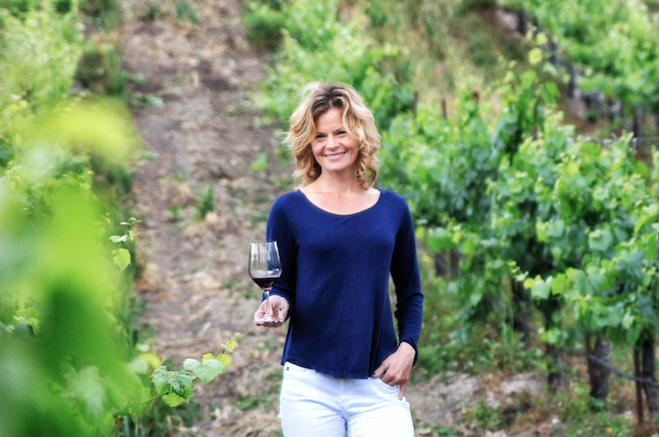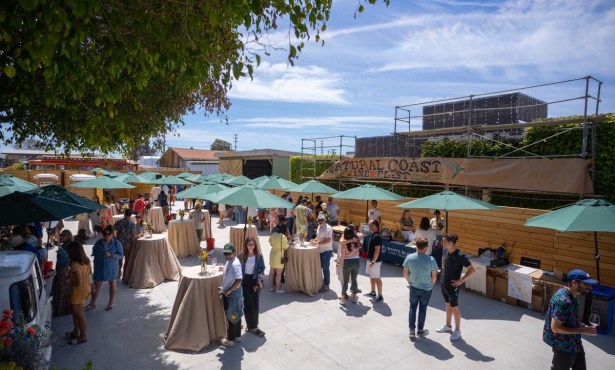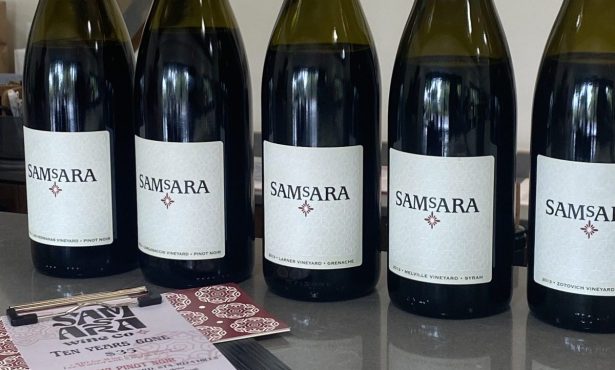Garagiste Fest Goes Grenache
Annual Showcase of Boutique Winemakers Shines Spotlight on Versatile Grape
Grenache is considered to be the pinot noir of Rhône varietals. That’s due to its pretty aromatics, full of rose petals and bright red cherries; a relatively lighter frame, compared to brawny syrah and leathery mourvèdre; and the ability, depending on where it’s grown and how it’s vinified, to be made into a wide range of styles, from delicate, lithe, and transparent in color to ripe, structured, and inky. It’s rising in popularity across the country — and is the preferred grape for rosés most everywhere — and provides a truly blank canvas for emerging winemakers to establish their style.
So grenache is a perfect pairing for the California Garagistes, a boutique winemaker community whose Southern Exposure festival comes to Solvang March 31-April 2. Along with more than 40 producers pouring all sorts of varieties and blends at the main tasting on Saturday, there’s a panel that morning featuring these three grenache producers discussing why they love this grape. Here’s a sneak preview. See californiagaragistes.com for tickets.
Sonja Magdevski, Casa Dumetz: Though she started making wine in 2004 and opened her popular tasting room in Los Alamos in 2011, Magdevski’s decision to focus her Casa Dumetz brand on grenache didn’t come until after first working with the grape in 2014. “I was freaked out and excited by the flavor profiles that were coming out from the barrels,” said Magdevski, who makes about 1,000 cases a year, 80 percent of which is grenache. “Everything that applies to pinot and syrah does not apply to grenache. The fruit behaves differently. I was immediately hooked.”
She’s now making single-vineyard grenaches to explore Santa Barbara County’s unique corners, from Kimsey in Ballard Canyon and John Sebastiano in the Sta. Rita Hills to the Santa Barbara Highlands of Cuyama and a new vineyard called Portico in Los Alamos. She picks the fruit at similar times and makes them exactly the same, so the only differences are truly from the vineyards.

“That’s the challenge: How do you make grenache beautifully expressive, singular, and unique?” she explained. “Now the goal is to just keep looking for the best sites that totally speak to me and make me happy.” casadumetzwines.com

Zac Wasserman, Frequency: Wasserman started working for syrah hero Joey Tensley in 2010, kicked off his own brand in 2012, and opened a Los Alamos tasting room himself in 2014. The bulk of his 800-case production is a countywide GSM, but he makes single-vineyard syrahs and then one grenache from Colson Canyon Vineyard, a rugged, mountaintop site above the Santa Maria Valley that Tensley owns.
He thinks it is the best grenache site in the county. “I’m just really lucky to get it because I happened to be Joey’s assistant — if I wasn’t, I wouldn’t even know it existed,” he said. “The soil is crazy rocky, and the vineyard is completely watered off a spring. It is farmed way more minimalistically, so it’s super concentrated and so structured because the berries never blow up.”
It sells itself. “I don’t even put it on the tasting list, and people buy it all day,” he said. “Everyone is looking for a new variety to bring to the party, and grenache is really crowd-pleasing. If you make balanced wine from grenache, there is nothing offensive to anyone.” frequencywines.com
Cris Carter, Weatherborne: Despite early dreams to be a pilot like his dad, Carter wound up attending UC Davis and then working at Cakebread Cellars in Napa, Santa Barbara Winery with Bruce McGuire, Cloudy Bay in New Zealand, and Penner-Ash in Oregon. In 2012, he returned to Santa Barbara, where he’d grown up, and started Weatherborne as a pinot noir brand while working as a brewer for Golden Road in L.A., which sold to Anheuser-Busch in 2015.
In 2015, Carter expanded his portfolio to include grenache from the John Sebastiano Vineyard. “I’ve always been intrigued by it because it is more pinot-like — lighter, ethereal, and delicate,” he said. “But it can also be something more substantial.”
Carter plans to plant some grenache on land he recently purchased in Anderson Valley and believes the grape would work well in many parts of the state, even the Central Valley, since it can hold high yields in warm weather and still retain character. “I just really like the potential for grenache,” he said. “It makes great wine from high-end vineyard designates all the way down to simply fruity table wine. It’s a great match for California.”
weatherborne.com



